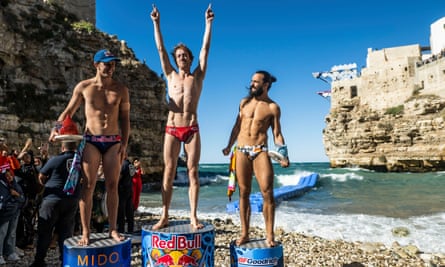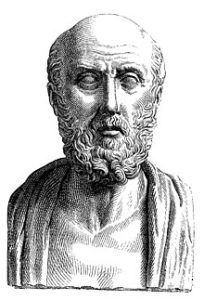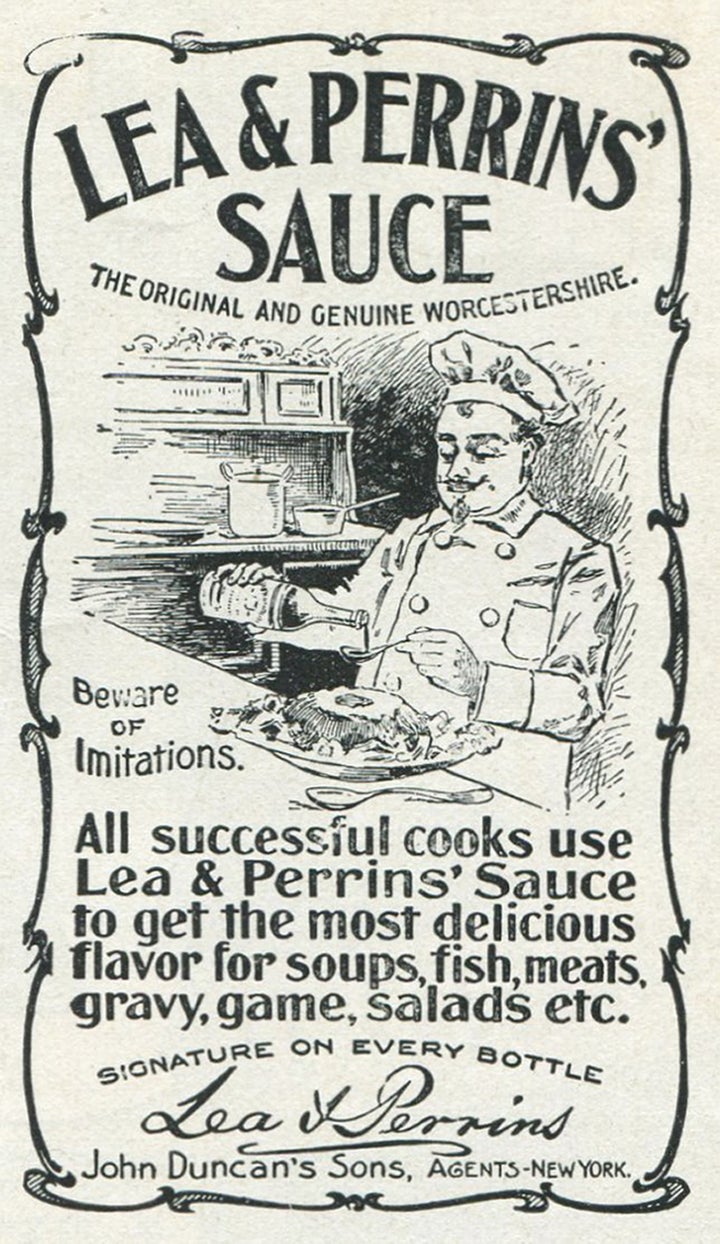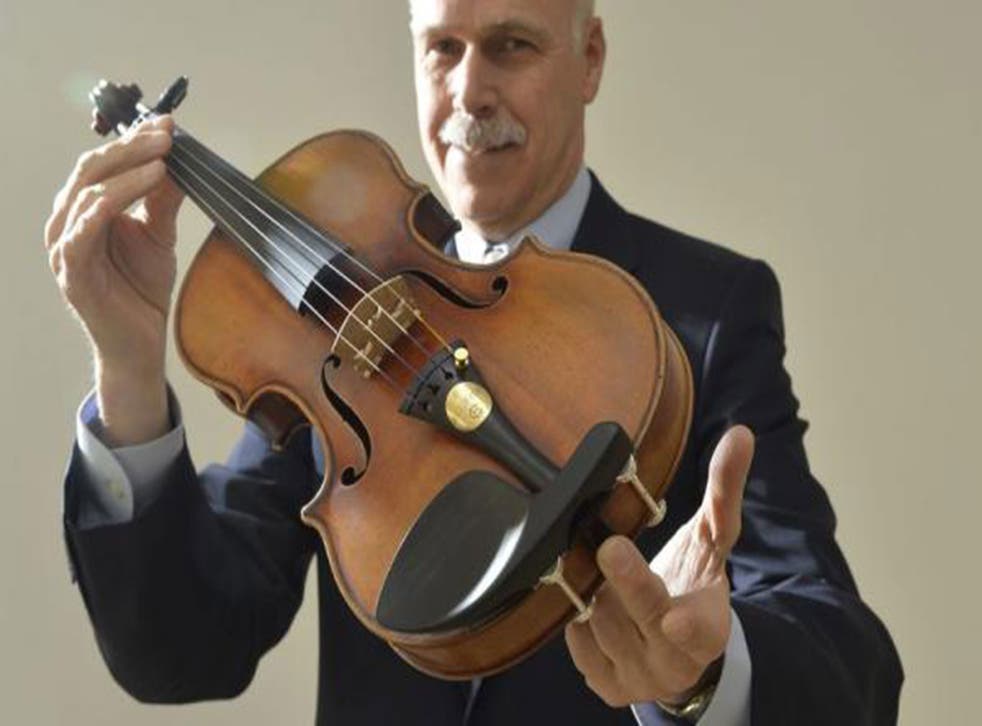Local knowledge
RPS has been fortunate to become the preferred seismic technology services provider for the Canadian potash industry. Our experience is unmatched and provides us with a unique understanding of the evaporite section gleaned from tens of thousands of kilometres of 2D and thousands of square kilometres of 3D seismic acquisition and interpretation in Saskatchewan and other parts of the world.


No coach, no agent, no ego: the incredible story of the ‘Lionel Messi of cliff diving’
Gary Hunt is an enigma. He trains with the intensity of a modern athlete, but relaxes like a sportsman of a bygone era. He is fiercely competitive but unbelievably laid-back. How did he become the greatest cliff diver of all time?
I
n early May 2009, 12 men arrived in La Rochelle on the west coast of France, carrying a few pairs of Speedos in their luggage. They had not come to swim but, as they liked to put it, to “fly”. Their sport, which involves diving from cliffs, buildings or bridges, always comes with an atmosphere of nervous excitement, but this time the stakes were higher than ever before. Cliff diving had long been at the obscure end of extreme sports, a pursuit for thrill-seekers with day jobs. Now, the energy drink company Red Bull was launching what it called a “cliff diving world series”, with eight events scheduled across the summer that would attract hundreds of thousands of spectators. Here was a chance at fame and, if not fortune, for the very best of the divers, a modest living.In traditional pool diving, the highest event is the 10-metre platform, and even Olympic divers can find the height unsettling. In La Rochelle, the organisers had affixed a short platform to the ramparts of the medieval Saint Nicolas Tower, 26 metres above the frigid sea – as high as an eight-storey building. In their three seconds of flight, the divers would reach speeds of more than 50mph. At that speed, a head-first entry is too dangerous. They would need to break the water with their feet, trying to make as little splash as possible. In each of their three competitive jumps, the divers could take off facing forwards, backwards or, most terrifyingly, from a handstand position. As they fell, they would do as many twists and somersaults as they dared in order to impress the judges before hitting the sea. Make a mistake and it was like you’d “run full speed into a wall”, as the Colombian Orlando Duque, the favourite to win the new series, explained at the time.
The Duke, as he was known, was 34, charismatic and handsome, with a long ponytail that trailed behind him as he flew. His main rivals were veteran high divers who’d come from as far as Australia, Russia and the US. There were a few novices, too, including one from England. Gary Hunt was 24, skinny and pale. He was still so inexperienced from such heights that he wore two pairs of Speedos for extra protection. A Red Bull photographer later recalled that when he approached Hunt that year “he often looked at me with a suspicious, sidelong glance and quickly shuffled away”. Hunt was an introvert, but there was another reason for his reticence. He was emerging from a mental breakdown following the death of his best friend two years earlier.
Hunt went on to take third place in La Rochelle, and as the 2009 season progressed, it became clear that he was a natural. Like all the best divers, he had an acute sense of aerial awareness, always knowing where he was in the air, even as he spun and somersaulted. No matter how elaborate his routine, he was able to enter the water safely. Then there were the qualities that set Hunt apart: his preternatural calmness and his imagination. One of the major challenges of cliff diving as a competitive sport is that it is very difficult to practise in advance from the full height. At the time of Hunt’s first season, there were no training facilities with platforms high enough. (Today, there are just three, in Austria, the US and China.) For that reason, high divers had only ever performed routines that could also be done from a 10-metre platform in the pool. Hunt wanted to try something more ambitious, an unprecedented dive that made the most of the elevation from which he would be falling. He realised that there was only one way to proceed. He would have to practise his new dive in pieces, and then, on the day of competition, put it all together for the first time.
At the fourth event of the tour, in Antalya, Turkey, Hunt felt ready to try. Before the start, when the athletes informed the judges what dives they would perform, Hunt described a routine that had never been attempted before in any sort of diving: a triple somersault, with four twists – the triple quad. It would be, as Duque put it, “the most difficult dive ever done”.
Not everyone was pleased. The score for a dive is calculated by multiplying the judges’ marks for execution by a number rating the degree of difficulty. One of Hunt’s rivals publicly complained that he was trying to win by degree of difficulty, which was “not the right way”. Other divers worried he would get hurt. “We were like, dude, slow down, don’t push yourself, this is high risk,” recalled Hunt’s friend and fellow competitor Steve Black. He knew what he was talking about – his previous job included performing at a stunt show where he was set on fire before leaping into a tank of water in the dark.
Hunt ignored the criticism and the advice. He didn’t win with his triple quad in Turkey, but he did in the next competition. At the last stop of the season, he introduced another new dive, and won again. Overall that season, he finished tied on points with The Duke, who was crowned champion, having won more of the individual competitions. Hunt was content. He hadn’t set out to win the series, he told an interviewer during the season, but to explore his potential.
Going into the 2010 season, he was more confident: he ditched his second pair of swimming briefs. After winning the first three events, he announced another radical innovation: a running take-off from the platform. It worked in the practice rounds in Polignano a Mare, a seaside town on Italy’s heel, but in competition his timing was slightly out, and his chest and head slammed into the water. The safety divers, who wait in the water for the diver to land and then follow them under in case they get injured or lose consciousness, helped him on to a jetski and he was treated in hospital for concussion. For two weeks he couldn’t move his shoulders or neck. One week after that he was back on the platform for the next competition, staring down at a lake far below.
S
ince that inaugural season in 2009, when he finished second, Hunt has been on a run of dominance that would be extraordinary in any sport, winning 42 of 82 Red Bull cliff diving events, and nine of 11 world series titles. The other two times he was runner-up. He is, unquestionably, the greatest cliff diver of all time, “the Michael Jordan, the Muhammad Ali, the Tiger Woods” of the sport, as Steven LoBue, an American diver who had the misfortune of competing against Hunt for many years, put it in 2021.No one on the cliff diving circuit has done more to raise the standards of the sport, or to increase its public profile. “Gary put the asphalt on the gravel for the rest of us,” one of his current rivals, Cătălin-Petru Preda, told me. But Hunt remains strikingly uninterested in the financial opportunities or professional trappings that typically come with such sporting success. He doesn’t have a coach, an agent or any interest in feeding the social media machine. His fierce competitive desire appears unconnected to his ego. He gives his winner’s trophies to his mother or puts on his carpentry belt and turns them into something useful, like an ashtray or pot-plant holder. (“Trophies disguised as objects,” he calls them.)
Hunt is now 38 but has retained, as L’Equipe newspaper put it, the look of an “eternal teen”. He’s lean as a snake, with unbrushed blond hair, and dresses like he woke up late and grabbed whatever was at the top of the pile. Even those who know him best describe him as an enigma, a daredevil who like to spend his free time gardening. He trains with the intensity of a modern professional athlete, diving every weekday and spending hours in the gym, and relaxes like a sportsman of a bygone era, enjoying roll-up cigarettes in the evening and several drinks too many after a win. By his own admission he is spectacularly absentminded and spectacularly unbothered by the consequences. “Falling asleep on trains, missing planes, nothing phases him,” said his sister Jeannette, whose wedding he came within a whisker of missing.

In September last year, I travelled to Polignano a Mare to watch Hunt compete in the penultimate event of the 2022 cliff diving world series. It’s a beautiful setting, with the old town built on the cliffs overlooking the Adriatic Sea on one side, and a cove on the other. Wandering through the narrow streets the evening before competition began, wearing my media accreditation badge, I was stopped by a man who mistook me for a member of the Red Bull organising committee. He was an amateur high diver from Freiburg, Germany, one of tens of thousands of spectators who would watch the competition from the beach, rocks, balconies or boats that weekend. When I told him I was there to write about Hunt, his jaw dropped. It was as if I’d told a football fan I was interviewing Lionel Messi.
The event in Polignano was crucial to Hunt’s season. He desperately needed to win here if he was going to stay in the race for a 10th series title, and his fourth in a row. He lay third in the overall rankings, with just this and one more event to go. On Friday morning, the day the competition began, I went to meet Hunt for breakfast at his hotel. When I arrived, he was midway through a plate of eggs, bacon and tomato, which he would wash down with two coffees, a croissant and a bowl of granola. “I don’t have to be fussy with what I eat,” he said, laughing. “I only have 27 seconds of work this weekend.”
That was true: five practice dives and four competitive ones, of three seconds each. But they would take their toll. For high divers, injuries are a constant risk. Two of the divers meant to be competing in Polignano had withdrawn: one with a punctured lung after landing on his chest at the previous event, the other with a fractured cheekbone and two black eyes from a botched dive earlier in the week. Even if a dive goes to plan, pain is a certainty. “The impact of hitting the water is always violent,” Hunt said. “The force spreads through your feet into your legs. If you have not protected your balls, it’s like someone has taken a razor blade to them. Or it can be your bum, which you really have to squeeze.”
He was laughing again. The rest of the hotel dining room was silent, with a few other divers lost in thought, trying to get focused. Hunt was not ready for that yet, and when the time came, he had his own way of preparing. Instead of putting on noise-cancelling headphones and listening to music, he would juggle, keeping five balls in the air at a time. The idea is to slow his mind by doing something instinctive, he explained, like when he plays a familiar piece on the piano, one of his other hobbies. “You’re not really thinking what you are doing. It can almost feel like your brain is not controlling your hands.”

The juggling might seem like an ostentatious show of bravado, an attempt to psych out his rivals. But the more time I spent with Hunt, the more obvious it became that this was authentic. He is so casual that I sometimes found myself wanting to remind him the competition is starting soon and he really needs to get ready. He does not seem like other elite athletes, because he doesn’t really think of himself that way. As we were finishing our chat, a middle-aged couple walking by stopped and stared at Hunt. He blushed. Even after all these years of success, it still seems to surprise him that people know who he is.
L
ike many tales of human flight, this one started with an envious glance upwards. Hunt was nine and in a pool in Leeds, in the north of England. As he’d done with ballet and tap and modern dancing, he’d followed his two older sisters into competitive swimming. But Hunt was not a strong swimmer, and was bored doing lengths. Out of the corner of his eye he saw some other children jumping off a platform into the water, chatting and laughing as they waited to dive again. That looked more fun.Hunt begged his parents to let him try. He quickly progressed from the 1-metre to the 3-metre and 10-metre platforms, and within a couple of years he was travelling the country for competitions, and training five times a week. “Gary was a very quiet boy,” Adrian Hinchliffe, his coach in Leeds, told me. “He was not the best diver we had, but he loved the sport and could do an amazing handstand, and would always win the contest to see who could hold it the longest. He was very competitive.”
For the early morning sessions, his mother, Pamela, would drive him to the pool at 5am and doze in a sleeping bag in the car while he dived. The two of them were close. It was different with his father. Peter Hunt was a shy, anxious man who worked in middle management for British Telecom. He spent all his free time working, sitting at the dining room table in front of a huge pile of paper, a cigarette in his mouth. To Hunt, it seemed like his father never really wanted children, especially not a boy. He never seemed particularly interested in his son, or offered him praise. To this day, Hunt thinks that part of his dedication to being the best comes from a desire to make his father proud.
When Hunt was 16, his parents separated, and his mother moved to Southampton with the children, where he continued to dive. A few years later, Hunt was joined there by his best friend, Gavin Brown. Brown was from Bradford, close to Leeds, and the boys had trained together for several years when they were younger. Though Hunt was a very good diver, Brown was better, winning a bronze medal at the junior world championships. Popular and outgoing, he lived by his motto, “go hard or go hard home”.

They both enrolled at Solent University, but diving remained their focus. With a few other boys in their club, the Southampton Diving Academy, they’d spend hours studying videos of their diving heroes, like the Russian Dmitri Sautin who, after being stabbed numerous times on a Moscow street when he was 17, went on to become the most successful diver in Olympic history. After training sessions finished, the boys would try to emulate Sautin, or bait each other into ever crazier dives. Tom Owens, who was part of the group, and is now head coach at City of Sheffield Diving Club, told me that Hunt was the only one who needed no encouragement to do something outrageous. He’d climb trees until the branches cracked, and worm through narrow sewer pipes by the light of his mobile phone. Like many people I spoke to, Owens noted Hunt’s odd mixture of personal qualities. “He had this in-built drive to challenge himself,” said Owens, but at the same time, he was “laid-back to the point of horizontal”.
One year, a team of divers from their club were invited to a competition in Egypt. On the morning of their flight, Hunt was about to leave the house when he realised he’d forgotten his passport. “He ran upstairs and then came down slowly,” Hunt’s mother, Pamela, recalled recently. “His passport had run out.” She had to drive him to London to renew it, and then help find him another flight. Hunt then left his wallet on the plane and had his phone stolen while sightseeing in Cairo. The story has become legend among Hunt’s family and friends. But when I asked him about it, he’d forgotten most of the mishaps. He did recall that he got bumped up to first class on the flight to Cairo. Great trip!
In 2006, Hunt qualified for the Commonwealth Games in Melbourne in the synchronised 10m platform event, diving with Callum Johnstone. Hunt’s father had died the previous year from pancreatic cancer, but his mother, sisters and assorted aunts, uncles and cousins flew to Australia to watch the pair win third place for England.
Though Hunt was still only 21, he could see that younger, more talented divers were coming through. One was 11-year-old Tom Daley, who’d beaten Hunt in a competition and would go on to represent Great Britain at four Olympic Games.
If Hunt wanted to be the best at something, there was only one way to go. Up.
H
unt’s first trip into high altitude came later that year, when he was still at university. Back then, and to a lesser extent today, the amusement park circuit was a common source of employment for cliff divers, allowing them to improve their skills while earning money. Hunt’s diving coach in Southampton had been asked if he knew anyone who could fill in for a pirate show in Lido di Jesolo, a resort town near Venice, Italy. He recommended Hunt, who readily accepted.Besides performing in sword fights, Hunt’s role was to leap into a tiny pool from 18 metres. This was the first time he’d be diving from above 10 metres. The ladder was narrow and the platform barely had space for his feet. Hunt feared that he might miss the pool when he jumped. But he quickly got the hang of it, and then started trying more complicated dives. “You know how you can drop a cat and it always lands on its legs?” said Steve Black, who was also working at the park. “Well, Gary was like a cat. He would do these crazy tricks and the crowd loved it.”
Hunt’s friend Gavin Brown also tried high diving that summer, at a different amusement park. When the pair returned to the house they shared in Southampton, they watched videos of cliff diving competitions and talked about how they might push the boundaries of the sport one day. Perhaps they could perform more twists and somersaults than the current divers dared, or as Brown suggested, take off using a running jump. And why not take those risks? They were 22, talented and ambitious, their whole lives ahead of them.
Brown, more extroverted than Hunt, would sometimes go out partying by himself and then phone his friend to ask for a lift home. In the early hours of 28 April 2007, on a night out, Brown rang but Hunt missed his call. Later that morning, Hunt’s phone rang again, and when he answered he learned that Brown had been knocked over in a hit-and-run accident and was undergoing emergency surgery. He died later that day. (The driver of the car, a farm worker without a licence or insurance, dumped the vehicle and fled to his native Poland. He was arrested two years later, extradited to the UK, and sentenced to five years in jail.)

In the months that followed, Hunt lost control. “I was just in disbelief that Gavin had died,” he told me. “I started to imagine that he was not dead and that I had to accomplish some mission to be reunited with him.” A voice in his head told him to walk from Southampton to Bath, 50 miles away. He got lost and at nightfall he sheltered in a barn, where he was found by the police, who’d been alerted by reports of a man on the highway.
Trying to forget, Hunt smoked weed and took party drugs, but he couldn’t shake the despair. Invited to a stag-do in Brighton later in the year, he ended up alone on the beach in tears, screaming at the sea. A year after Brown’s death, in 2008, Hunt travelled to Rome to compete in the 10m platform event for Great Britain, but when he was meant to be diving he was found walking in the street reading Shakespeare’s The Tempest. “He was not making any sense when he talked,” said Adrian Hinchliffe, who was GB coach at the time. “I called Gary’s mother and told her I was bringing him home right away.”
W
hen Hunt made his Red Bull debut in 2009, his mental state had improved, though his grief was still raw. On tour, he deliberately kept people at a distance. “I never really wanted to make a good friend again. I kind of accepted I was going to be alone,” he told me. His grief was also a kind of fuel. “All the things we’d talked about doing in high diving, he couldn’t do now, so I said to myself, I’m going to do it,” Hunt recalled. “I felt like it was on me to accomplish all the dreams that we’d had together.” Even today, there’s a sense among Hunt’s friends that Brown’s death still motivates him. “Gavin’s death is a massive part of Gary’s story, and it’s never left him,” Hinchliffe said.Between competitions, that first year, Hunt worked at the Walygator amusement park near Metz, in the north of France. His role in the show was playing a high-diving character who believed he was Tarzan. “Jane” was played by a French actor named Sabine Ravinet, who also ran theatre workshops in prisons and for children from troubled homes. She was more than two decades older than Hunt. She spoke little English – and he little French – but with miming and patience they got to know each other. “My first impression was that he was not like the others,” Ravinet recalled recently. “In his way of listening to you, of being completely present with you, his gentleness, and also a certain mystery in his personality.”
They moved in together in Paris in 2010, while continuing to work at Walygator each summer for three more years, even as Hunt flew to distant locations – from Easter Island to Mexico – on the cliff diving tour. He grew to love the amusement park life. Besides divers, there were clowns, dancers and puppeteers from across the world. After each day’s show, they’d meet up at one of their bungalows, have a barbecue and beers, and teach each other new skills. That’s how Hunt learned to juggle. He was also healing. “I realised that the fact that Gavin was no longer there had given me the freedom to move to France, and to live this life,” he told me.
In 2013, having won the three previous Red Bull series, Hunt was pipped to the title at the last event of the season in Thailand. He decided that if he wanted to get back to the top he needed to give up amusement park work and dedicate himself to competitive diving. That year, high diving was included for the first time in the World Aquatics Championships in Barcelona, and Hunt was part of a large GB squad. But because high diving is not an Olympic sport, he did not even receive any kit from British Swimming. He arrived at the competition wearing a plain white T-shirt on which he’d written “GBR”, and left with a silver medal, one of only two medals won by the team. In the 2015 and 2019 championships, he won gold.

By then, Brexit was looming and Hunt’s freedom to live and work in France was no longer guaranteed. He could, however, apply for citizenship, given the time he’d lived there and his cultural integration. He spoke fluent French and had even stopped reading in English, preferring to work through the French classics, like Alexandre Dumas’s The Three Musketeers and The Count of Monte Cristo.
In early 2020, after receiving French citizenship, Hunt announced his intention to compete for France both in high-diving contests and in the pool at the 2024 Olympics, to be held in Paris. For all his success, he had never been able to let go of his childhood dream of competing at the Olympics. The French diving team was delighted to have him as a high diver, but 10m platform diving was another matter. It is a sport that favours younger athletes, and besides, Hunt had not dived head-first in competition for more than a decade.
Initially, his quest seemed doomed. Then, in late 2021, Clémence Monnery was appointed head trainer. Having watched Hunt train, she decided she wanted him to be on the Olympic team. “Gary is à part,” she told me. There aren’t many like him. “For a lot of divers, fear is a problem at 10 metres. But the king of 27 metres is not scared!” And when he nailed a new dive once in training, she said, he didn’t have to repeat it again and again to have the confidence to do it in competition.
Even so, the Olympics remains a long shot. Hunt’s friends and rivals are astonished that he is even trying to get there. “It’s a crazy move!” Orlando Duque, the 2009 series winner, who is now the sports director of Red Bull Cliff Diving, told me. “For Gary to make the Olympics at 40 will be a huge achievement,” said Hunt’s boyhood coach Hinchcliffe, who now works with the Australian diving team. “It’s inspirational just to try.”
A
t Polignano a Mare last autumn, to reach the diving platform, competitors had to walk from their hotels through the old town, get the nod of approval from a security guard, and enter a cliffside apartment. On the apartment’s balcony, two platforms extended out over the sparkling waters in the cove. The lower platform, 21 metres above the sea, was for the women, who joined the tour in 2014. The men’s platform, reached by a ladder on the balcony, was six metres higher. Twenty-seven metres is the maximum height for men’s competitive diving: above that the diver’s rapid acceleration makes it almost impossible to perform additional somersaults while greatly increasing the injury risk.It was 12.30pm and the athletes were preparing for the practice dives on the terrace, stretching and doing somersaults on to mats. When it was time to dive, most of the divers went through the same routine: peering over the edge of the platform to attract the attention of one of the four safety divers treading water in the landing zone below, before throwing to them a pair of flip-flops, which the divers would need to cross the pebble beach, cobble stones and narrow streets when returning to the cliffside apartment. Then they motioned to the safety divers to slap the water, which would help them distinguish the blue of the sea from the sky as they flew, and judge where the water surface was.
Just watching the divers walk along the platform made my heart pound. Some made the sign of the cross on their chest, or slapped their thighs to psych themselves up. Every now and then a diver would step back from the edge just before they were supposed to jump, disturbed by a gust of wind or a moment of apprehension. Blake Aldridge, who partnered Tom Daley at the 2008 Olympics, described to me his fear when he made his debut in a Red Bull event in France in 2011. It was blowing a gale and freezing, conditions pool divers never have to deal with. “I looked over the edge and then I walked straight back off the platform. I couldn’t do it.” Eventually, he tried a simple dive, with one somersault, but the force of the impact shocked him. He was too scared to do twists, until Hunt, a childhood friend, offered to dive off the platform alongside him. This act of kindness gave Aldridge the courage to try. He became hooked on cliff diving – the experience of flying makes you feel, for just those three seconds, “unbreakable, like Superman or He-Man”, he said – and had a successful career, even if the element of fear never truly went away. When he started, he had assumed that, as an Olympic athlete, cliff diving would come easily to him and he would dominate. He soon realised he was wrong. “It’s a different sport [to pool diving], and Gary is the best by a mile, a unique talent and human.”
On the platform at Polignano, Hunt was casual, not even bothering to bring flip-flops, for he planned to take a shortcut back up. He sat down on the edge, swinging his dangling ankles for a while, before standing up and jumping into the void. On surfacing, he waved away the jetski that takes the divers back to shore, and swam to the cliff. After several failed attempts, he managed to leap up with one hand to grab hold of a small ledge, and proceeded to scale the cliff, like a climber, reaching the platform five minutes before the start of the competition. I asked one of the Red Bull staff if this was normal behaviour. “For Gary it’s normal,” he replied.
P
rizes on the Red Bull circuit are modest compared with many sports. In 2013, when Hunt left the amusement park to focus on competitive diving, the male and female winners of each of the eight competitions in the series received about €5,000, with a €12,000 bonus for the series champion. (Today, event winners get €7,085 and the overall winner €16,000.) But with his travel expenses covered by the tour, and him winning so often, Hunt was earning enough to live on. He continues to support himself mainly through competition winnings, and a small housing allowance that he receives from the French Swimming Federation.As the dominant athlete in a spectacular sport, Hunt could earn significantly more through endorsements and sponsorships. Early on in his career he signed a small deal with a construction firm but found the requirement to always wear a cap with its logo too stressful. Today, his only sponsorship, worth a few thousand pounds a year, is with the Australian swimwear company Budgy Smuggler, to wear its briefs in competition.
In Polignano, I asked Hunt why, given how many of the Red Bull series he had won, he wasn’t on the company’s books, like some other divers on the tour, including his young challenger, Aidan Heslop, from Britain, and the leading female diver, the Australian Rhiannan Iffland. He said he had once applied, but never heard back. Such a slight might have made some people bitter, but not Hunt, for whom the term even-tempered is too mild. (His partner, Ravinet, said that in the 12 years they’ve been together, she’s never seen him angry.) “I guess I don’t really fit the mould [for Red Bull]. I don’t self-promote, and I’m not a fan of other extreme sports. I play the piano!” Hunt told me. “But I’m very happy. I’m pretty sure I will have no regrets when I’m older about not trying to make more money.”
After the first two round of diving on the Friday, Hunt was in second position and, crucially, ahead of his main rivals for the series title. Up to this point, the degree of difficulty had been capped, so divers weren’t allowed to do their hardest routines. But for the remaining two dives, there was no limit. The sport has developed since Hunt’s early days on tour, and he no longer had a repertoire of the most difficult dives, putting him at a disadvantage at this stage. If divers with harder routines executed them well, it would be tough for him to match their scores. Two of them had done that consistently during the season. Heslop was second overall coming into Polignano. Just 20, he’d grown up watching cliff diving on YouTube, idolising Hunt. He was part of a new generation of divers going directly from pool diving to cliff diving, now that a professional career in the sport was possible. Ahead of Heslop was the series leader, Cătălin-Petru Preda, a thoughtful Romanian, who saw Hunt, a good friend of his, as the biggest threat for the title.
On the second day of competition, the wind picked up, tossing around the yoga mats at the foot of the dive platform. For his third dive, Hunt had chosen the famous triple quad that he’d pioneered in 2009. He skipped along the platform to the edge, acknowledged the crowd, and then turned his back to them, facing inwards. After taking a single breath and the tiniest hop, he bent his knees and whipped up his arms as if they were wings, rotating them behind him. Launching into the air, upwards and outwards, he corkscrewed his body while flipping until he was upside down, left arm wrapped around his head and right arm around his chest. Three more twists, two more somersaults, before righting himself and entering the water with barely a splash. With one round to go, Hunt was in the lead.
B
y lunchtime the next day, Sunday, the town was heaving. People queued for an hour or more to get a slice of focaccia before the competition started. The beach was so packed that security guards prevented anyone else coming in. Music pounded from giant speakers.The women dived first, with Iffland winning the competition and securing the overall series win, her sixth. Then the men went, in reverse order. With just Hunt left to dive, Heslop had moved into first place, and Preda was a close second. Hunt skipped to the edge of the platform, waved to the crowd and then did a little dance, his hands switching between his knees, and dived. When he surfaced, he high-fived a cameraman in the water.
For what seemed an age, all the other divers and the spectators stared at the giant screen on the beach, waiting for the judges, who were observing from a boat, to hold up their scores. And then, finally, a roar. “Gary Hunt, the legend once again!” the announcer yelled. With an average score of 8.5, Hunt had overtaken Heslop, and also moved into a narrow overall series lead. After spraying champagne for the television cameras and crowd, Hunt stayed on the beach long after all the other divers had left, posing for photos with fans.

That evening we went for dinner with some of his closest friends on tour: Artem Silchenko and Nikita Fedotov, both from Russia but competing as independent athletes, and Oleksiy Prygorov, of Ukraine. Hunt can converse in Russian – he learned it specifically to be able to talk to the Russian-speakers on the circuit – and has visited the country many times, often to hang out with Silchenko. The men drank wine, smoked and told jokes and held a contest to see who could make the best dolphin noise. Hunt won his second competition of the day. Mostly though, he was quiet, content. Later the group joined the afterparty in the town’s main square. When I left Hunt, just before midnight, his cap was sideways on his head and his footwork shaky. When he woke up in the morning he had no recollection of how he got back to his hotel.
Four weeks later, Hunt managed to arrive on time at Sydney harbour for the last event of the series. He needed another victory if he was to be sure of his fourth series win in a row, and his 10th overall, a feat that may never be repeated. Again, it came down to the final dive. Heslop, in second place in the competition, and overall, could hardly bear to look as Hunt stood on the edge of the platform. When Hunt hit the water, Heslop sunk to his knees, his head in his hands, knowing that, yet again, the king had done enough. Emerging from the water with a huge grin, Hunt hopped over a security barrier and hugged Ravinet. When I texted to congratulate him, he seemed more excited by the prospect of his upcoming week’s holiday in Australia than by his latest title.
“Whoohoo,” he wrote, “je suis en vacances!!!”
ECONLOG POST
Dec 16 2022
Pitfalls with the Hippocratic Oath and the Woke Oath
By:
David Henderson
My friend Ted Levy, a retired doctor, told me over the phone this week that it’s not just the latest Woke Oath for doctors that is problematic; the traditional Hippocratic Oath is no prize either.
So I encouraged him to write up his point in two posts. The first takes on both the Hippocratic Oath and the Woke Oath. That’s below. The second is his preferred substitute, which he came up with. Here’s Part I, his criticisms:
Introduction
Medical oaths have been in the news lately. Some conservatives have expressed dismay about a woke oath that has made the rounds, lamenting that society is moving away from the traditional Hippocratic Oath. In fact, that move happened quite a while ago. And the Hippocratic Oath has its own problems. So I thought it might be fun to analyze both the traditional oath and the recent woke oath, and perhaps compare them to what we’d want to see in a medical oath that libertarians could embrace.
The Hippocratic Oath
Hippocrates of Kos was a Greek physician practicing around 400 BC, traditionally referred to as the “Father of Medicine.” The Hippocratic Oath is named after him. It is often thought to contain the famous phrase, “First, do no harm.” It does not. It is often thought to be an altruistic oath in which physicians pledge to do their best for the patient and for humanity. It is not. A simple economic analysis indicates that much of it was designed to maintain a medical guild capable of garnering supra-market profits by limiting competition.
Let’s consider some aspects of the Oath.
Early on, after swearing to Apollo—the God of, among other things, medicine—the young physician says he will “hold my teacher in this art equal to my own parents; to make him partner in my livelihood; when he is in need of money to share mine with him.”
That is, doctors in training guarantee to provide financial security to academic physicians and, as needed, provide them with a sinecure. Nice work if you can get it.
But a physician-in-training must do even more for those masters who train him to enter the guild. The trainee must consider his master’s sons as his “own brothers, and to teach them this art, if they want to learn it, without fee or indenture.” Today, Ivy League schools are often condemned for offering “legacy admissions.” That’s the practice of a college giving preferential admissions treatment to the children of its alumni. As you can see, it’s not a new idea. The medical guild of Hippocrates’ time wrote it into its oath. Legacies don’t need to have any demonstrated competence. They are automatically accepted and they get training for free. Good deal if you can get it. But the nature of guilds is, unfortunately, that most people can’t get it.
The Hippocratic Oath continues with a pledge “to impart precept, oral instruction, and all other instruction to my own sons, the sons of my teacher, and to indentured pupils who have taken the Healer’s oath, but to nobody else.” It’s hard to get clearer than that. The medical guild supporting the oath wants to restrict practitioners not to those who best perform medical skills to benefit patients, but as much as possible to their own families, friends, and loved ones. BUT TO NOBODY ELSE.
The oath then delves into two issues that, thousands of years later, remain hot button topics. Ancient practitioners pledged not to engage in euthanasia or abortion. You may well oppose both procedures today. Many do. But notice that in both cases the oath opposes patient autonomy, a value and principle not in evidence in ancient times but that has become pre-eminent in modern medical ethics.
Here’s yet one more example of how guilds function. The Hippocratic Oath includes a passage sounding odd to modern ears: “I will not use the knife, not even, verily, on sufferers from stone, but I will give place to such as are craftsmen therein.” In modern times a surgeon is a type of doctor. In ancient times a surgeon was an alternative to a doctor. Doctors treated what ailed their patients with potions, powders, ointments, and advice. Surgeons (who were also barbers) cut the patient open. The Hippocratic Oath (where “stone” refers to kidney stones or gallstones, horribly painful conditions for which surgery is generally warranted) tells doctors to do nothing in such cases but instead to send them to a surgeon/barber. In other words, they must uphold professional jurisdictional rules. Neither the medical nor the surgical guild competes with the other, to the benefit of both.
You may think, “That’s good. People with kidney stones should see a surgeon.” But, as any modern surgeon can tell you, sometimes they are sent patients on whom they could operate but who would do just as well with non-surgical treatment. In ancient times, such patients didn’t get the best treatment; they got the treatment based on the way the guilds divvied things up.
Medical guilds, protecting their members more than the public, have historically been the rule rather than the exception. Historian Ronald Hamowy, in his article “The Early Development of Medical Licensing Laws in the United States 1875-1900,” appearing in the Journal of Libertarian Studies 3 (1):73-119 (1979), noted that from its origin in 1847 the American Medical Association spared no effort at restricting medical supply, largely via licensing. The AMA’s code of medical ethics, based on and expanding from Hippocrates’ Oath, contained a variety of principles not based on patient care but on physician avarice. For example, one edition of the AMA’s Code of Medical Ethics stressed the impropriety of “A wealthy physician [giving] advice gratis to the affluent.” Why? Because it decreases the “common funds” of the guild, thereby “defrauding” fellow doctors.
But now, in the 21st century, only about 15 percent of American physicians are members of the AMA. The dramatic growth of third-party, largely governmental, payments to physicians in the second half of the 20th century achieved the AMA’s long sought goals of limiting supply and increasing physician revenue and thereby ironically diminished its membership among now satisfied private practice doctors. Instead, as government rules, regulations, and restrictions became a more substantial part of the physician’s practice, and had to be stressed in medical education, academic medical faculty and administrators became more important among AMA members. And academic medical faculty, of late, tend to be woke.
A Woke Oath
In December 2022, Robert Englander, MD, MPH, Associate Dean of Undergraduate Medical Education at the University of Minnesota school of medicine, led the first year medical students in their White Coat ceremony. That’s a traditional ceremony in the move from layperson to medical professional, where students first get to wear the symbolic “white coats,” garb they will continue to don throughout their medical school, internship, and residency. But Dr. Englander’s words, dutifully repeated by the first years, was anything but traditional. He had re-written the medical oath to, in his vision, fit the times.
He began by noting that the medical school was “located on Dakota land,” referring to land owned by the Dakota Indian tribe. He added:
“[T]his acknowledgment is not enough. We commit to uprooting the legacy and perpetuation of structural violence deeply embedded within the healthcare system. We recognize inequities built by past and present traumas rooted in white supremacy, colonialism, the gender binary, ableism, and all forms of oppression.”
So it seems clear that when Englander (how appropriate a name for someone recognizing his role in white supremacy and colonialism!) said the medical school was “located on Dakota land” he didn’t mean “purchased from the Dakota Indians.” He meant illegitimately taken from them. Yet for all his expressed willingness to end the “perpetuation of structural violence” and recognize the inequities rooted in white supremacy, colonialism, the gender binary, ableism (in a medical school??, a place devoted to training people to aid the sick and infirm??), and “all forms of oppression” Englander never mentioned his willingness to give the stolen land back. I can’t speak for Native Americans, of course, but I’d be willing to bet that given the choice of getting their land back or dealing with the traumas associated with the gender binary, they’d take the land.
Englander and his woke oath were nowhere near finished, though. It went on to pledge “healing our planet.” As Alex Epstein has noted in his book Fossil Future, environmental pleas to heal the planet involve demands to minimize if not eliminate human impact on the environment. Thus the need to reduce energy use as much as possible. Does Englander have any idea how much energy modern hospitals use? Maybe that’s why his pledge also commits to “honor all Indigenous ways of healing that have been historically marginalized by Western medicine.” Granted, acupuncture and medicinal herbs use much less energy than CT scanners and extracorporeal lithotripsy units.
The Woke Oath also contains a vow “to embrace our role as community members and strive to embody cultural humility” yet also to “learn from the scientific innovations made before us and pledge to advance and share this knowledge with peers and neighbors.” The Woke never see the contradictions in their visions. Many communities in America, we’ve learned in the last few years, are concerned about vaccines. Should the white coats learning about Jenner’s past scientific innovation “share this knowledge” with community neighbors? Or should they “embody cultural humility” and not bring it up, instead recommending “indigenous ways of healing…historically marginalized” in the past?
A reading of this version of a medical oath on YouTube led to much consternation. FIRE, the Foundation for Individual Rights and Expression, sent the medical school a letter of concern and received confirmation from the dean that no one was forced to attend the White Coat ceremony or take the oath. But if you get sick in the Minnesota area in the future, be sure to remember that you have indigenous and historically marginalized, as well as Western, medicine options to choose from. Well, maybe not all Western medical options, but at least the culturally humble ones.
The picture above is of Hippocrates.


